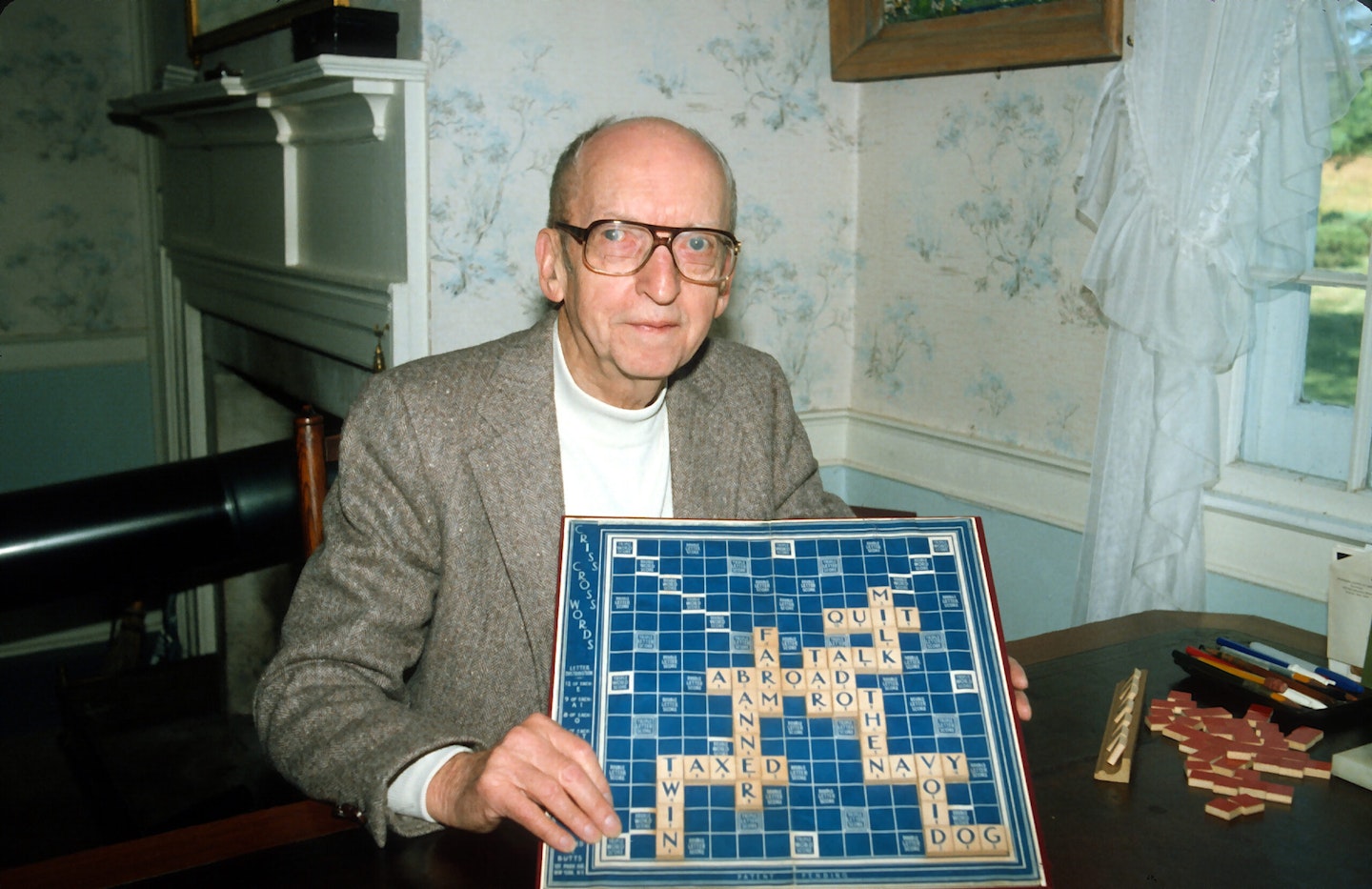Scrabble. A board game of skill, strategy and chance. A pastime that has induced many an argument in households across the globe — no, abbreviations are not acceptable! — and which has become the second best-selling modern board game in the world, behind Monopoly.
But how much do you know about the man behind the invention?
Early life
Alfred Mosher Butts was born on 13 April 1899 in Poughkeepsie, New York to Allison Butts and Arrathusa ‘Arrie’ Elizabeth Mosher, a lawyer and a high school teacher, respectively.

The youngest of their children, he attended Poughkeepsie High School and, much like Ernő Rubik (the inventor of the Rubik’s Cube), went on to study architecture.
After earning his degree at the University of Pennsylvania in 1924, Butts joined New York architecture firm Holden, McLaughlin and Associates, where he designed several buildings including the $6.8 million Charles W Berry Housing Project on Staten Island and the Stanford Free Library in Stanfordville, New York.
A year after his graduation in 1924, Butts married Nina Ostrander (13 October 1883 – 28 December 1979), a graduate of Syracuse University, who taught biology at Poughkeepsie School. They had no children and resided in Jackson Heights, Queens, New York.
Scrabble sparks
After the Great Depression began in 1929, work was scarce. Butts lost his job in 1931 and, aside from publishing an article in American Architect, spent much time unemployed, only returning to his job as a draftsman in 1935.
But it was during this period when inspiration struck. Butts noticed that Monopoly was taking off and that word games remained a relatively untouched marketplace.
Early iterations of Butts’s famous game were known as ‘Lexiko’ and ‘Criss-Cross Words’, while Butts played around with combining anagram and crossword concepts. He used 100 anagram letter tiles and four mah-jong racks, with a cribbage board for the score.

In order to decide the spread of letters across his iconic tiles, Butts analysed the front page of The New York Times, keeping track of how often each letter of the alphabet would appear in words of normal word formation. He then assigned a point value to each letter according to its frequency, for example Qs and Xs, which came up relatively rarely, were worth 10 points each, but vowels, being far more common, would score only one point apiece.
In an interview with National Public Radio’s Morning Edition in 1984, Butts said of his development process: “I made up some sets. Nothing very much happened, though. Then, suddenly, I got the idea: how about playing on a board? And that‘s what developed into what I call Criss-Cross Words.”
To make the Criss-Cross Words board, Butts stuck architectural graph paper onto a chessboard. He tried grids of various dimensions, for example 15 x 15, 16 x 16, 17 x 17, and with different quantities and positions of premium squares, which doubled or tripled the value either of letters or of whole words. Although this gave his invention the look of a crossword puzzle, crucially, players did not have to know or understand the definitions of the words they played. As with the current version of Scrabble, proper names and abbreviations were not allowed, but Greek letters were permitted, including helpful words such as XI and PI, and notes from the musical scale (FA, LA, etc).
By 1938 the game resembled the version that is still popular to this day: a board of 225 squares with 100 tiles in total. Butts tried marketing Criss-Cross Words himself, but with little to no success, and it was rejected by all the major game manufacturers. Instead, he consoled himself by playing his creation with his wife and friends. Despite being the game’s inventor, he was by no means its undisputed champion, reminiscing that during this period his wife ‘beat him at his own game — literally’, with Nina having once scored 234 points for the word QUIXOTIC.

However, Butts’s fortunes took a turn in 1948, when his friend, James Brunot, approached him about manufacturing and distributing his invention. Butts sold the rights to Brunot in return for a small royalty, which worked out at about three cents per set sold.
Brunot, for his part, renamed it Scrabble, copyrighted the board game design, and together with his wife began the production of the game at their home (later moving their operation to an abandoned school building in Dodgington, Connecticut).
The real turning point for the game came in 1952 when an executive from New York department store Macy’s discovered Scrabble while on holiday at a resort (where they saw the game being played) and decided to stock it in the famous store. From that point onwards, orders started to pour in. The game became so popular that demand rose to over 6000 sets a week by early 1953.
With the game a smash hit, Butts earned a total of $1,066,500. However, despite the large sum, Butts dismissed the idea that he became rich from his invention, explaining: “One-third went to taxes, I gave one-third away, and the other third enabled me to have an enjoyable life.”
Later years
Not much is known about Alfred after his Scrabble invention. As seems to be in keeping with his humble nature, he kept a relatively low profile, focusing on his work and spending his free time following his own artistic passions. In particular, he was adept at using the architectural blueprint process to create drawings of New York streetscapes — so much so that six of his early works are exhibited at the Metropolitan Museum of Art in New York.

Aside from his artistic endeavours, Butts all but disappeared from the public eye until his death in 1993, after which he was laid to rest alongside his wife in Stanfordville, New York.
Happily, Butts did live long enough to see the widespread popularity of his invention, a popularity which endures to this day.
